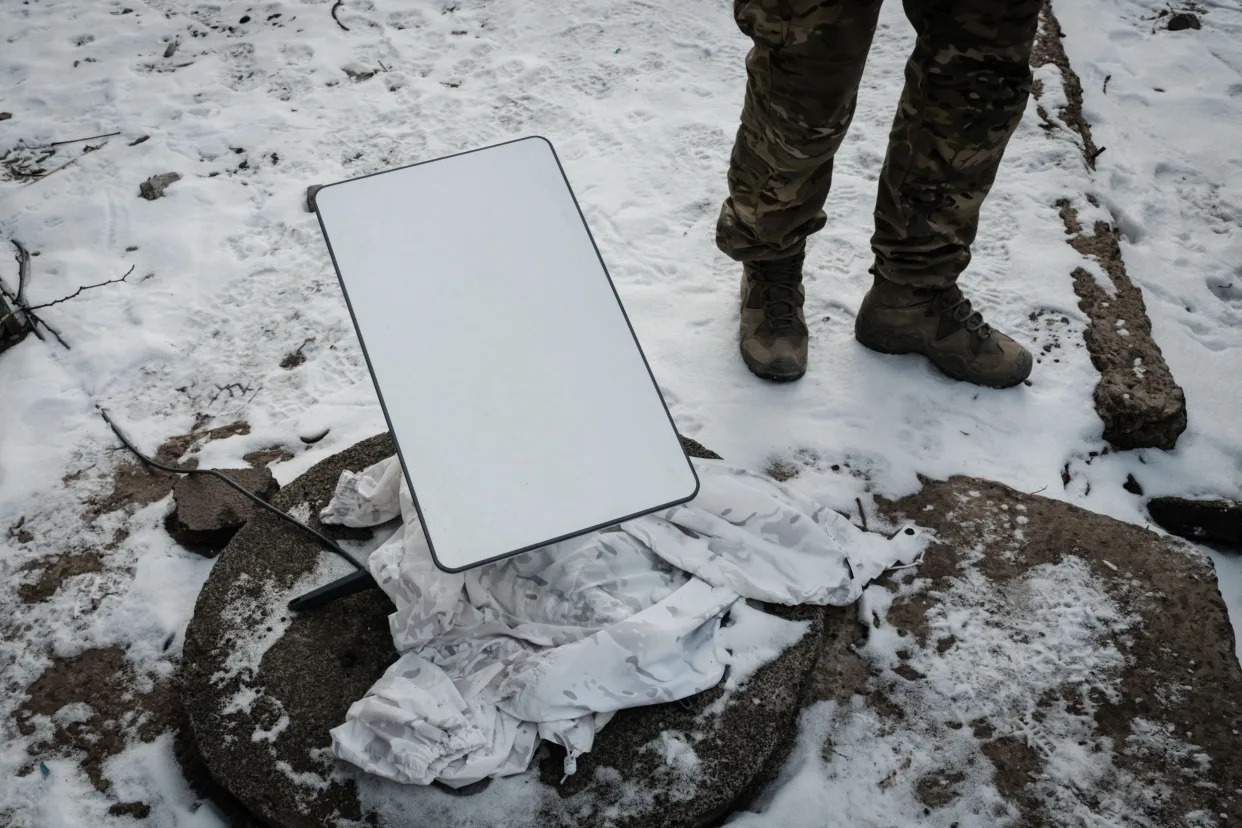Will Mining the Moon and Asteroids Be Worth the Trouble?
Kevin Hurler
Fri, September 8, 2023 The new era of space exploration is opening entirely new possibilities, including the tantalizing prospect of mining for resources on the Moon and asteroids. Sounds exciting—and potentially very profitable—but the reality of the situation is that space mining is completely uncharted territory. Plenty of prospecting needs to be done first to determine if these resources are even economically worth being harvested in the first place.
In the next decade, NASA and its collaborators are turning their gaze back to the Moon. The agency is looking to land astronauts there in 2025 as part of the ongoing Artemis program; this would be the first time an astronaut has landed on the Moon since the final Apollo mission in 1972

Conceptual image of a future asteroid mining mission.
Indeed, space is packed with resources that humans will need to survive while exploring and working in the dark void, and for our economies to flourish. The Moon hosts large reservoirs of water ice, which could be mined and used to make drinkable water, oxygen gas for settlements, or rocket fuel for launches off the lunar surface. There’s also helium-3, rare earth elements (REEs), and even the dusty regolith to consider. Asteroids too are concentrated sources of valuable elements like platinum, which could be harvested, shipped back to Earth, and sold to industries. At the same time, both public and private space sectors view living in space as a viable opportunity to advance humanity.
The plans for space mining are, for the time being, painted in broad strokes, as space agencies and companies began laying the initial groundwork. Mining the Moon or asteroids for resources could be a huge shortcut in advancing plans for long-term habitability in space since the cost to launch anything from Earth’s surface remains incredibly high.
Before any ground is broken, however, companies and government agencies will need to run an analysis of the costs associated with mining the various resources to determine if it’s economically viable to process these materials directly in space, or to transport those materials back to Earth. They may very well decide that it’s simply not worth it, at least for the time being. Harvesting these resources in the harsh environment of space could very well be a logistical nightmare that requires decades of proof-of-concept. Even so, there are decades of research and innovation that points to just how possible space mining may be, and it all began years ago with the planning for the Apollo missions.
Mining materials directly where we need it
“The very first meeting in which resources from the Moon were discussed seriously, not just at a science fiction level, was in November of 1962,” Angel Abbud-Madrid, director of the Space Resources Program at Colorado School of Mines, told Gizmodo on a phone call. NASA was planning for Apollo at the time, and realizing that its astronauts will need a steady supply of oxygen, the space agency considered extracting it directly from the lunar surface, he explained. “It didn’t happen because we were there for just a couple of days, or a couple of hours, but the realization that you need the resources in-situ (i.e. directly at the site itself) has been around that long because of the extremely high cost, and high energy to launch anything from Earth,” said Abbud-Madrid.
For NASA, the word “mining” doesn’t quite capture the full picture of harvesting and using resources in space, so the agency instead uses the all-encompassing phrase, “in-situ resource utilization,” or ISRU. This umbrella term not only describes the process of mining the lunar surface for materials and resources, but also the use of those raw materials to produce new products
.

Conceptual image of an Artemis Moon mission.
Take, for example, ice. Lunar geologists have good reason to believe that reservoirs of water are ice tucked within soil in the Moon’s permanently shadowed regions. Those reservoirs are what NASA’s ill-fated Lunar Flashlight was set to map out. In a not too distant future, astronauts on the Moon could mine those reservoirs and melt the ice to top off their drinkable water supply. That water could also be chemically split on the Moon into oxygen and hydrogen, which could supply habitats and bases with breathable air or be used to synthesize rocket fuel and propellant.
“ISRU could mean mining something and bringing it back to Earth,” Ben Bussey, chief scientist at commercial lunar lander provider Intutive Machines, told Gizmodo during a phone chat. “But it could also mean things like building infrastructure that then makes it easier to do things on the Moon.”
Astronauts could also take ISRU one step further and strip metal out of the lunar soil to build infrastructure like habitats or launch equipment. Jerry Sanders, ISRU system capability lead at NASA’s Johnston Space Center, says lunar soil contains aluminum, iron, titanium, and silicon, and that those metals could then be processed out of the regolith, forged into purer forms, and used for construction. Regolith could also be a good source of oxygen, as the element is trapped within the soil’s silicate minerals.
“All the regolith has somewhere around 42% to 44% oxygen by mass,” Sanders explained during a phone call. “So when we talk about processing the regolith, you get a lot of oxygen.”
NASA is laying the groundwork
While astronauts aren’t going to be setting foot on the Moon until Artemis 3 launches in 2025, NASA already has early plans for ISRU operations. Sanders said that the Lunar Trailblazer satellite will continue the hunt for water ice on the Moon’s surface using an infrared spectrometer from orbit. Since infrared light is absorbed by water, scientists can use readings from the probe to potentially identify the size and distribution of these reservoirs of ice, much like Lunar Flashlight was supposed to do.
Meanwhile, NASA’s VIPER—Volatiles Investigating Polar Exploration Rover—mission will drill into the lunar surface to find and analyze water ice directly. Lunar Trailblazer and VIPER are scheduled to launch in early and late 2024, respectively. Once this initial prospecting work is done, in a few decades, ISRU operations will be much larger.
“That far out in the future, you will be looking at large scale operations. You will have machines that will be drilling, that will be excavating, and that will be transporting material to a certain plant,” Abbud-Madrid said. “Everybody is going to need power, communication, and transport, so you’re going to have all of that infrastructure there.”
While NASA is planning its own missions to explore the possibilities for ISRU, the agency is also trying to set an example that private space companies can follow. NASA has outsourced its work to private space contractors before—rockets from SpaceX deliver agency payloads to orbit and new spacesuits for the Artemis program are being designed by Axiom Space, for example. In those cases, NASA had developed some sort of engineering framework or jumping off point for space companies to follow, but ISRU is terra incognita, and Sanders says that the private space industry needs to determine if mining on the Moon is even logistically possible before companies jump on board
.

Conceptual image of lunar habitat. Image: ESA/Foster + Partners
“Public-private partnerships and commercial involvement is becoming more and more important to succeeding and implementing [NASA’s] objectives,” Sanders said. “Before we can fully commercialize [ISRU], we need to basically help raise the whole technology portfolio such that NASA and the commercial industry feel comfortable enough to take on the job without going bankrupt.”
The prospect of mining asteroids
While the Moon’s surface could be a major source for water, oxygen, and more common metals like aluminum and iron, asteroids could be a source of precious elements. Platinum and nickel, for example, are concentrated in the core of metallic asteroids. As Abbud-Madrid explained, as an asteroid grows, its gravity increases, pulling these denser elements into it. Once mined, those metals could be shipped back to Earth to be sold to various industries. With that in mind, asteroids seem like a no-brainer for mining opportunities, but NASA doesn’t currently have any immediate plans to target them.
“We are currently focusing mostly on the Moon because it has the nearest term return on investment,” Sanders said.
Even though the public sector is focusing on the Moon, some private space companies are forgoing it in favor of asteroids. AstroForge is a California-based asteroid mining company that raised $13 million in funding in May 2022. The company has reportedly planned a method of mining asteroids anywhere from 66 to 4,920 feet (20 to 1,500 meters) in diameter by breaking them apart in space and collecting material, as opposed to landing on the rock and mining it directly.

Artist’s impression of metal-rich asteroid Psyche.
“Platinum-group metals are used across the board—they reduce vehicle emissions, they’re used in chemotherapy drugs, and every electronic device you have has a number of these elements,” AstroForge co-founder Matt Gialich told Gizmodo during a phone interview in May 2022. “The real dream here for us is to go and utilize deep space for resources.”
In January, AstroForge announced its two flights set for 2023. In April, AstroForge was expected to launch a spacecraft into orbit with a pre-loaded sample to serve as an asteroid simulant to demonstrate the company’s in-orbit extraction technology in a collaboration with OrbAstro. A spokesperson from AstroForge told Gizmodo in an email that the mission, called Brokkr-1, was “successfully launched, is alive, and is in a healthy state.” Another mission is currently scheduled for October 2023 which will see the company partner with OrbAstro, Intuitive Machines, and Dawn Aerospace to observe an asteroid target in deep space.
Is mining the moon and asteroids worth it?
So, will it all be worth it in the end? In short, probably—but there are a number of factors to consider.
Though the Moon boasts resources that can enable extended habitation, and asteroids teem with metals that are highly valued here on Earth, a space mining industry cannot thrive without a market for these commodities. A nation that is willing to purchase the oxygen processed from lunar regolith for its settlement on the Moon, for example, will drive the demand to mine more lunar regolith. At the same time, companies and agencies interested in space mining need to do a basic cost-benefit analysis of the resources they’re interested in. If they’re too difficult to obtain and too difficult to get to a customer, then the business case to mine those resources gets weaker.
“How things like prospecting and validation of a resource occurs on Earth, there’s a standard process to that. You need to find something, you need to find out if it is economically viable to extract it and use it,” Bussey said. “You can have a great source of something, but it could be too hard to get. I think that the same thing will be true on the Moon.”
Using lunar soil for rocket fuel and selling platinum harvested from an asteroid are fantastical images that feel too far-fetched to ever be feasible, but space mining—even on a small scale—is almost certain to happen in our lifetime.
Assuming that space miners decide a resource is economically viable enough, and that customers are willing to pay for it, the space mining industry can establish itself and expand. That expansion could fuel a completely secondary economy. The industry will need power, mining equipment, shipping logistics, and staff, all of which could be provided by other companies that are looking for their slice of the pie—the same way people tried to cash in on the California Gold Rush.
“Just like mining on Earth in the 1800s when people came to the west to look for gold and silver, there was also all this extraction,” Abbud-Marin said. “People sold shovels and picks and axes and made money out of the miners. Same thing there.”
Using lunar soil for rocket fuel and selling platinum harvested from an asteroid are fantastical images that feel too far-fetched to ever be feasible, but space mining—even on a small scale—is almost certain to happen in our lifetime. The science points to plenty of resources in our cosmic backyard that have strong financial incentives behind them, but the economics of space mining, for now, are yet to be fleshed out. Even still, civilizations have been living off the land since the dawn of humanity, and as we return to long-term space habitation and exploration, living off of the Moon and asteroids represents the next frontier.
Images: NASA
Gizmodo












